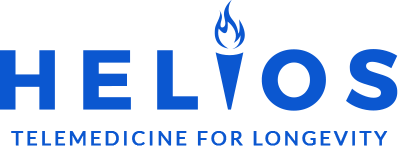Introduction
I’m Dr.Caplan with Helios Telemedicine For Men, and today’s topic is Testosterone Deficiency in a Nutshell.
This is a review and by necessity, we’ll skip a lot of stuff. So please use it as a guide. You can also check out the links for papers that go into much greater depth.
Hormones & Testosterone
Hormones are molecules that are made by one organ and travel through the blood system to another organ where they either give an order or send a message. They can be based on amino acid chains called peptides or on backbones of rings called steroids. Testosterone is a steroid hormone made in the testes in men that causes development of the male gender in the uterus and development of male characteristics during puberty, they then maintain those adult male characteristics throughout the rest of a man’s life.
Testosterone is low in childhood and rises during puberty. It reaches a peak at about age 20 to 25 and then falls through the rest of a man’s life. While it usually falls at a rate of about 1% or 2% per year in a minority of men, it falls faster. Once testosterone is released into the blood most of it is grabbed and bound by various proteins, sex hormone binding globulin, SHBG binds the testosterone very strongly essentially taking it out of circulation. Albumin and other proteins bind it more weakly releasing it throughout the day. There are three values of testosterone we can measure in the blood. The total testosterone is the full amount regardless of its bound state. So it includes that bound to SHBG and other proteins. The free testosterone is the amount that is not bound to anything and is therefore available to communicate with its targets.
Testosterone Levels
The bioavailable testosterone is the sum of the free testosterone and that which is bound loosely to the blood proteins. Although most research is based on total testosterone levels, the bioavailable testosterone may be the most consistent regarding symptoms of low testosterone. Testosterone levels in men are highest in the morning and fall through the day. So they are measured in the morning for diagnostic purposes.
The normal levels for total testosterone are usually reported as between 300 and 1100 nanograms per deciliter. The bioavailable testosterone ranges from 110 to 575 nanograms per deciliter and the free testosterone ranges from 46 to 224 Pika grams per deciliter. You have to remember though, that these are population-based and your ranges are probably much narrower. So it is possible for you to have symptoms of testosterone deficiency even if you are in the low normal range. And that said, it is unlikely that your insurance will pay for therapy if your levels are laboratory normal.
Testosterone levels are controlled by the hypothalamic pituitary testes axis where the hypothalamus in the brain senses the testosterone level in the blood and secretes gonadotropin-releasing hormone. If it is too low, the GnRH goes through special veins to the pituitary gland where it stimulates the pituitary to produce and release the sex hormones, luteinizing hormone, LH and follicle stimulating hormone, FSH. LH goes to the testes and says make and release testosterone which then goes back to the brain where the hypothalamus makes adjustments to keep itself and the body happy. FSH goes to the testes and says, make sperm.
Signs & Symptoms Of Testosterone Deficiency
It is not enough to have low testosterone levels to start therapy. You have to have signs and symptoms associated with low testosterone before you can be diagnosed and treated for symptomatic testosterone deficiency. These include signs and symptoms that are more testosterone specific, such as loss of sex drive, erectile dysfunction, reduced volume of ejaculate, loss of body hair, loss of muscle mass, fatigue and central weight gain. They also include those symptoms which are more loosely associated with testosterone, such as issues with sleeping, memory concentration, drive, depression, anxiety, hot flashes, aching joints and weakened bones.
Testosterone deficiency has been a hot topic for some years now but it is not a fad, rather it is that it is finally being recognized as an important part of men’s health. Low levels can cause anemia, muscle and bone weakness, loss of work and sports performance, reduced glycemic control and diabetes, obesity, heart and vascular disease and metabolic syndrome leading to significant complications in life from medical and quality of life issues to financial issues and premature mortality.
Categories Of Testosterone Deficiency
There are two basic categories of testosterone deficiency, including primary and secondary.
Primary occurs when the testes are the problem and cannot make enough testosterone to meet the body’s needs. Secondary hypogonadism occurs when it is the hypothalamus or the pituitary gland that are failing. They are differentiated by measuring the blood levels of testosterone, LH and FSH. A few words about estrogen before we get into the therapy for male hypogonadism, estradiol is a form of estrogen. It is made by conversion from testosterone by the aromatase enzymes that are located in the fat cells. Estradiol is important to men’s health as it supports bone density and moderates some of the emotional effects of testosterone.
There are estrogen receptors in the hypothalamus which when stimulated reduce the amount of GnRH that it releases resulting in less sex hormone stimulation of the testes. As the testosterone levels rise with therapy, there is more available to the fat cells so the estradiol levels rise as well. And this can cause symptoms like acne, erectile dysfunction, hot flashes, moodiness, tearfulness, hair loss, development of breast tissue and problems with concentration.
Treatments
To combat this rise, we sometimes have to give medications like Anastrozole or supplements like DIM to block the aromatase enzymes. Secondary hypogonadism is treated by using medications like Clomid or various supplements that block the estrogen receptors in the hypothalamus increasing its release of GnRH, thereby stimulating the pituitary to release more LH and FSH.
We can also use medications like anastrozole or supplements like DIM to reduce the estrogen levels in the blood so that there is less of it available to bind to the hypothalamic receptors in the first place. This may be enough to treat the secondary hypogonadism avoiding the side effects and risks of testosterone therapy. If it isn’t, we may still have to go to testosterone replacement therapy. If primary testosterone deficiency is mild, we may try treating it with Clomid as we would secondary hypogonadism. If we can increase the LH stimulation of the testes, we may be able to push them to increase their testosterone production enough to relieve the symptoms without having to go to testosterone replacement therapy. If not, we will have to use testosterone in some form or another. Once we do though, we essentially burn the Clomid bridge.
Testosterone is available in many different forms, including nasal gels, oral tablets, orally dissolving troches and tablets, cutaneously applied gels creams and patches, solutions for injection into muscles or into the subcutaneous fat and pellets for insertion under the skin. Each has its advantages and disadvantages and each is different in their cost and reimbursement by insurance companies. Regardless of the medium, all testosterone replacement therapy treatments have symptoms and side effects and complications. All of them stimulate the bone marrow, which may result in thickening the blood and increasing the risk for blood clots and strokes. They are all metabolized in the liver. So we have to follow a liver function tests and stop or reduce treatment if those tests go up.
Potential Side Effects
There are some reports that testosterone replacement therapy could increase the risk for you having a heart attack. They may stimulate the prostate tissue to grow causing problems urinating and there are concerns that it could cause the prostate cancers to grow or spread more quickly. Also, when we give testosterone, we turn off the hypothalamic pituitary testes axis shutting off the supply of LH and FSH. This may make the testes go dormant causing them to shrink in size and reduce the sperm count, which could cause infertility. There are things we can do to try to prevent this, including giving a hormone called human chorionic gonadotropin, HCG and or giving Clomid with the testosterone therapy. But patients may still have to be referred to fertility specialists if the sperm count remains low. So if you are otherwise healthy but have signs and symptoms and are concerned that you could have testosterone deficiency, you may want to talk to a men’s health specialist for evaluation and possible therapy.
Conclusion
This has been a review and I have glossed over it and skipped a lot. You can take a complimentary self-assessment survey here or make an appointment to see me. In our next video, I will try to give you some idea of how much testosterone therapy may cost.

